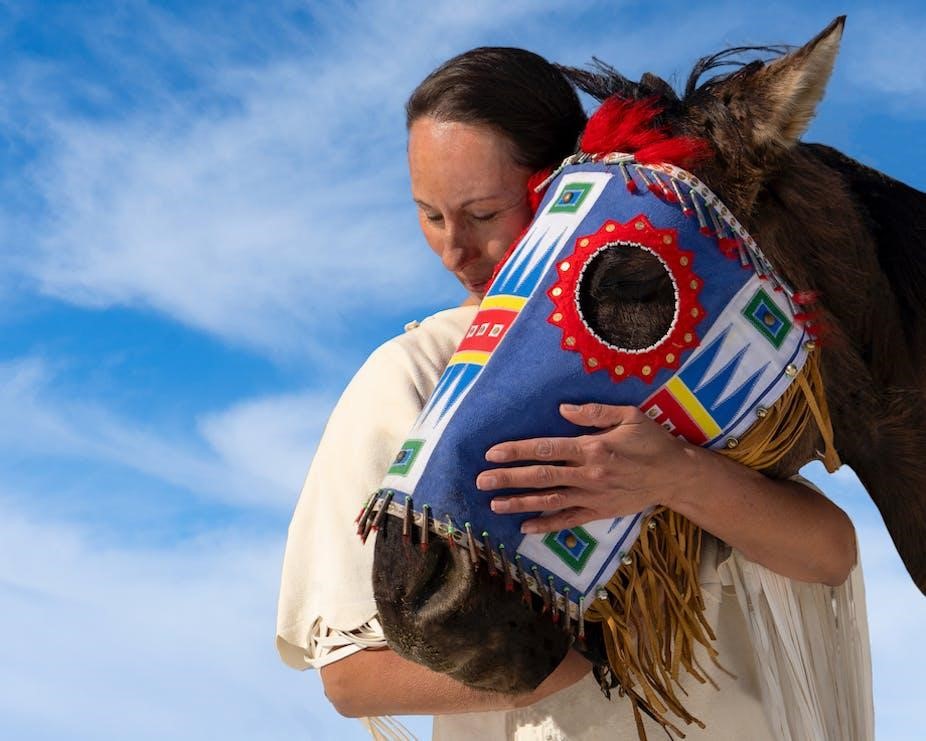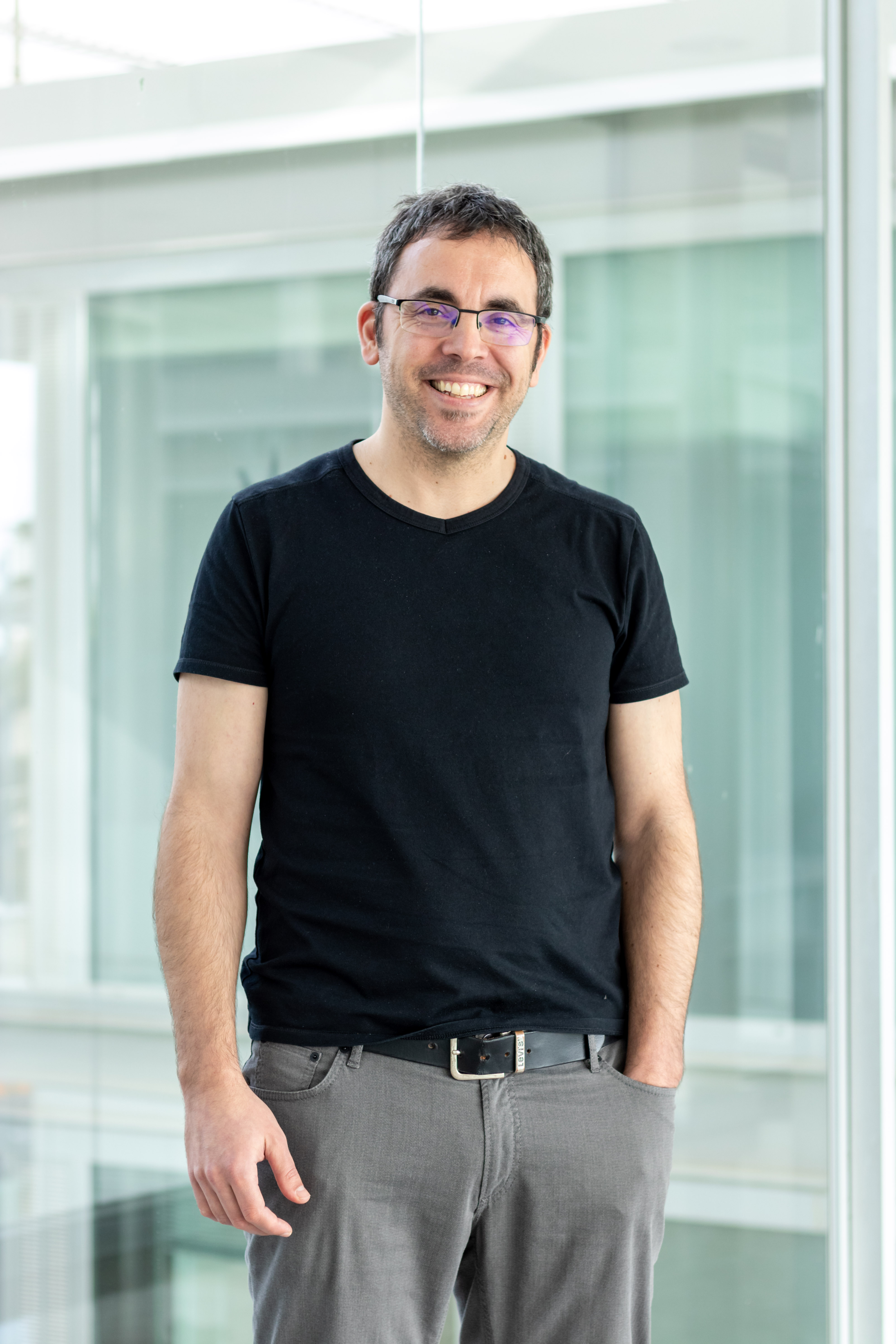Pablo Librado, among the awardees of the 2024 Newcomb Cleveland Award
The AAAS award celebrates intercultural research between Western and Indigenous scientists published in Science

The Principal Investigator of the IBE, Pablo Librado, is the co-first author of the interdisciplinary study carried out by Native American communities and scientists from around the world, which has been selected as the winner of the 2024 Newcomb Cleveland Award. The recognition comes with a prize of $25,000 and is awarded at the annual meeting of the American Association for the Advancement of Science (AAAS). It is the oldest and most prestigious award given by the organization and is offered annually to the most outstanding publication in the journal Science.
The award was presented to the diverse team of authors of "Early Dispersal of Domestic Horses in the Great Plains and Northern Rockies," published in the spring of 2023. The article combines archaeozoological and genomic studies of ancient horses excavated from archaeological sites worldwide and helped rewrite the history of how this animal integrated into Native American communities in North America.
"This award underscores the importance of intercultural collaborations as drivers of true scientific and social progress," comments Pablo Librado, a former researcher at the Center for Anthropobiology and Genomics of Toulouse (CAGT) of the CNRS and current Principal Investigator of the Institute of Evolutionary Biology (IBE: CSIC-UPF).
The awarded research shed light on the origin of the American horse
This interdisciplinary study combined the cultural and historical knowledge of Native Americans with genomic, computational, and archaeological techniques to clarify the origin of horses bred by Native Americans. "The evolutionary history of humans is closely linked to horses because they were our means of transportation for a long time, in Eurasia and America. Discovering their origins and dispersion sheds light on our history," comments Pablo Librado, co-principal author of the award-winning study and Principal Investigator of the IBE in the Ancient Population Genomics group.
“Walking the earth as Lakota is to protect, sustain and advocate for all life. This global collaboration, and those to come, are what is necessary for ourselves and all Peoples to protect their traditional lands, relations and lifeways for the sustainability of Grandmother Earth and all life. The time is upon us,” says Chief Joe American Horse, an Indigenous scientist, knowledge keeper and study co-author.
The prize funds will be used to create a donation for the University of Colorado, in memory of a co-author of the study and elder, knowledge keeper, and cultural educator of the Sicangu Lakota people, Sam High Crane. The donation will help support research and training of indigenous perspectives and young professionals in archaeology, archaeogenetics, and the museum world. This donation is the first step of a broader partnership between leaders of the Global Institute for Traditional Sciences (GIFTS), the French National Centre for Scientific Research (CNRS), Paul Sabatier University of Toulouse, and the University of Colorado.

Horses are an active part of life for the Lakota and many other Plains nations today.
Credit to Jacquelyn Córdova/Northern Vision Productions.
American Horses: A History of Extinction and Reintroduction
Horses are a fundamental part of Native American identity. Their oral traditions indicate coexistence with this animal since time immemorial, despite multiple scientific studies suggesting that horses on the continent became extinct thousands of years ago. According to historical documents, it wasn't until 1519 that European settlers—led by Hernán Cortés—officially brought their horses to Indigenous territories.
To contrast these two hypotheses, the team sequenced fossils of native horses, about 28,000-30,000 years old, and compared them with genomes obtained from Native American settlements—several centuries old—as well as with modern horses zealously protected by Indigenous communities. Genomic analysis revealed that today's horses in Native American communities are not descendants of the analyzed ancient native horses but of European horses. However, carbon-14 dating also revealed that these horses of European descent integrated into Native American communities earlier than documented by European chroniclers.
According to the research, Spanish colonists arrived on the American mainland with their horses before 1519. Some horses, possibly escaping from settler farms, were adopted and multiplied by Native American communities before the arrival of the settlers to their lands. The study also suggests that horse fossils recovered in Indigenous reserves after the 18th century have ancestry not only from Spanish horses but also from British ones—also attesting to this later colonization. When discussing North American horses, we encounter a history of extinction and reintroduction of a species through colonization. "Native American horses that have survived to this day are not wild and of a single original lineage: they are hybrids and of European origin," confirms Librado.
About the Researcher
Pablo Librado joined the IBE in January 2023 to lead the Ancient Population Genomics group. His group develops new computational tools to document the molecular and evolutionary basis of animal domestication. In this way, he seeks to understand how human societies have shaped ancient and current biodiversity. Born in Burgos, Pablo Librado graduated in Biology from the University of Barcelona, where he completed his doctorate in Drosophila genomics. In 2015, he joined the Center of Excellence for GeoGenetics in Copenhagen for his postdoctoral research on the domestication process of the horse using genomes recovered from fossil remains. In 2018, he moved with his group to Toulouse, France, where he continued to specialize in the field of paleogenomics at the CNRS before joining the Institute of Evolutionary Biology (IBE) as Principal Investigator in 2023 with a position as CSIC scientific researcher.

